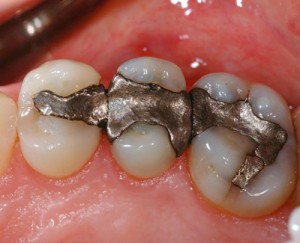Solution Formation
Key Questions
-
Answer:
Clearly the identity of both the solute and the solvent affect solution formation.
Explanation:
The most common solvent is water. Why? For a start it covers 2/3 of the planet. Water is an exceptionally good solvent for ionic species, because it can solvate ions to form
#Na^+(aq)# and#Cl^(-)(aq)# .The
#(aq)# designation refers to the aquated ion; in solution this means the ion is surrounded by, or aquated by approx. 6 water molecules, i.e.#[Na(OH_2)_6]^+# . Water is exceptionally good at dissolving SOME ionic species because it can solvate ions; but some ion pairs i.e#AgCl# have little solubility in water. Water is conceived to have a partially negative central oxygen atom, bound to partially positive hydrogen atoms. This charge separation is referred to as polarity and allows ion solvation, and water is the best example of a polar solvent.Hexanes is a non-polar solvent. Hexanes will dissolve ethanol (
#C_2H_5OH# ), but not methanol (#H_3COH# ). Why not? -
A solution is a homogeneous mixture of two or more substances.
There are many types of solutions.
Gas in Gas
• Air — oxygen and other gases dissolved in nitrogen.

Gas in Liquid
• Fish tank — oxygen in water.
• Carbonated beverages — carbon dioxide in water.
• Blood — oxygen and carbon dioxide are essential components of blood chemistry.Liquid in Liquid
• Windshield washer fluid — methanol in water.
• Alcoholic beverages — ethanol and other solutes in water.
• Vinegar — acetic acid in water.
Solid in Liquid
• Maple syrup — sugar in water
• Brine — salt in water.
• Body fluids — complex aqueous solutions of sugar, urea, electrolytes, and many other solutes.
Gas in Solid
• Hydrogen dissolves rather well in palladium and tin.
Liquid in Solid
• Dental amalgam — mercury in silver, tin, and copper.
• Hexane in paraffin wax
Solid in Solid
• Steel — carbon atoms in a crystalline matrix of iron atoms.
• Bronze — copper and tin.
• Brass — copper and zinc.
Questions
Solutions
-
Solutions
-
Solution Formation
-
Solvation and Dissociation
-
Saturated and Supersaturated Solutions
-
Measuring Concentration
-
Molarity
-
Molality
-
Percent Concentration
-
Dilution Calculations
-
Factors Affecting Solubility
-
Solubility Graphs
-
Colligative Properties
-
Separating Mixtures
-
Osmolarity
-
Solute
-
Solvent
-
Solving Using PPM (Parts Per Million)
